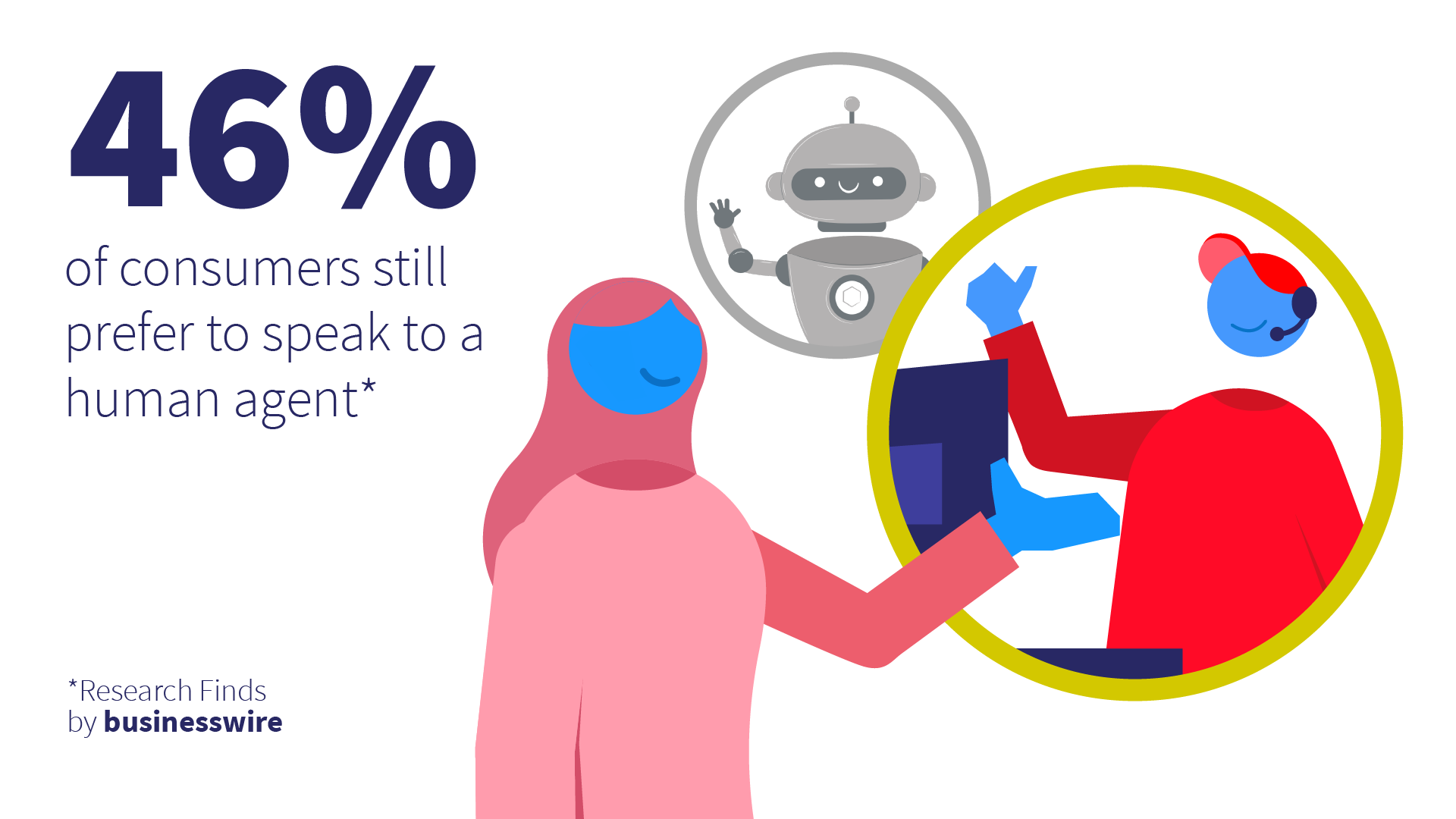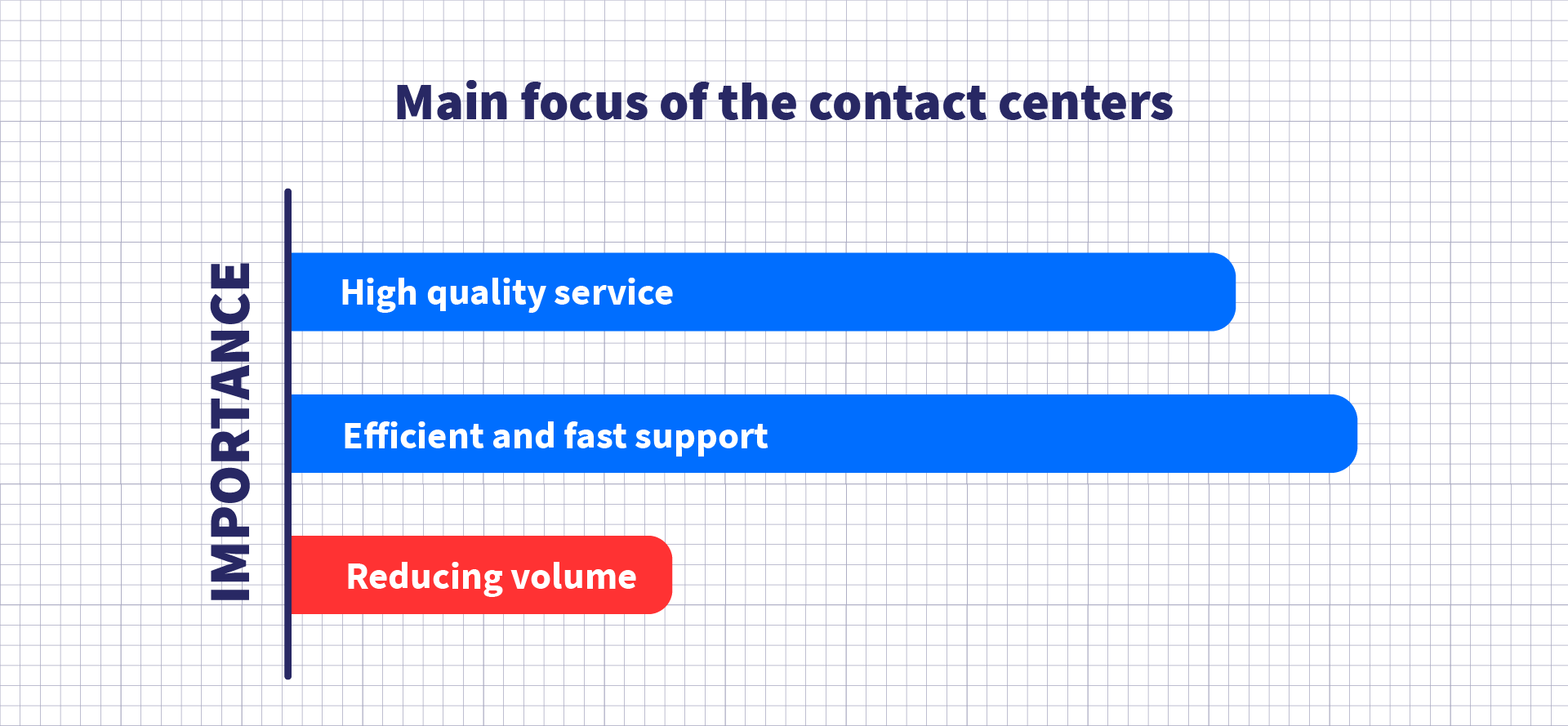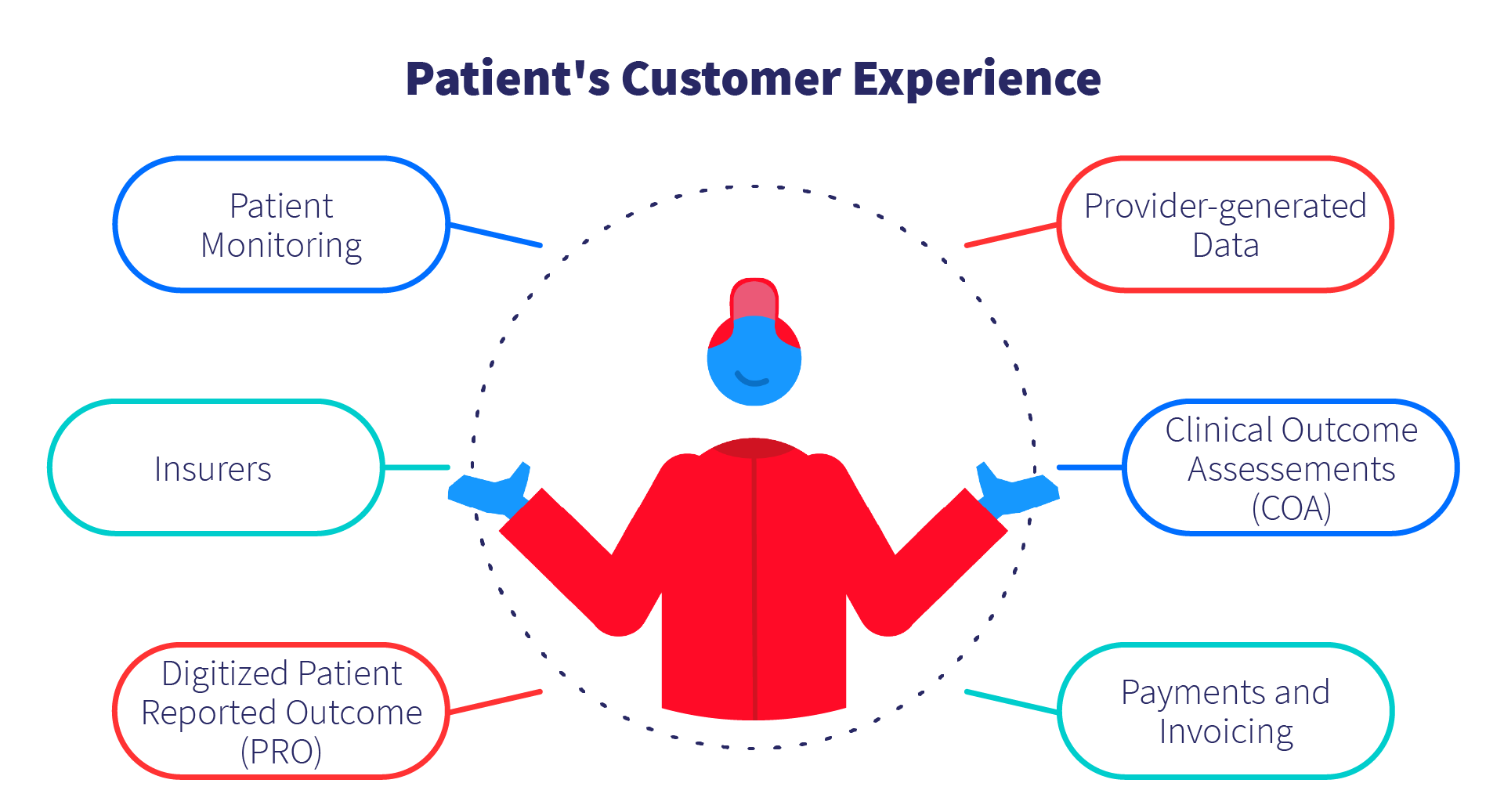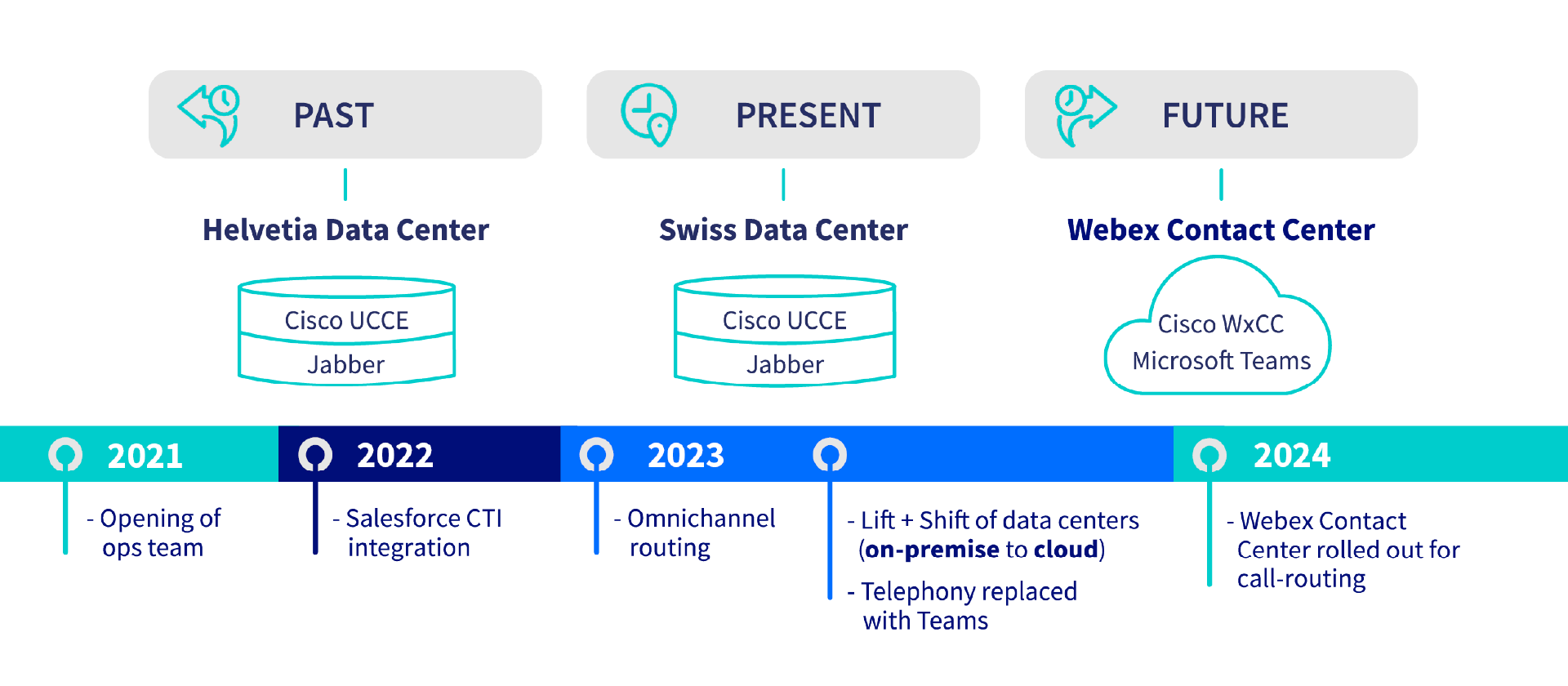You’re calling a health insurance provider to verify coverage for your children. The issue is urgent, so you’d rather not wait in a queue for 45 minutes. Either way, you have to get this done today. Full stop.
The next day, you contact your bank’s fraud detection department to dispute an unauthorized charge to your credit card (it has been quite the week). Is the availability of an AI-powered chatbot that important? Or does your bottom line boil down to getting through to a live agent so you can get your money back?
For years, leaders in the contact center industry have adhered to the 80/20 rule: agents must strive to answer 80% of calls within 20 seconds. Yet today’s contact center experience is more nuanced than ever, with more entry points than ever, leading many to reexamine what customers really want from the contact center.
Self-service? Less waiting time on the phone? First-contact resolution?
All of the above?
The answer might surprise you. Finding it is critical to building a long-term strategy that works.
The numbers say: it’s complicated
Let’s not bury the lede: customer preferences depend on many different variables.
You can imagine a world in which your experience with the fraud department begins with an AI virtual assistant that hands you off to a live agent. It’s possible that, with respect to verifying healthcare coverage, you’re always going to end up on the phone.
To meet these expanding and evolving expectations has meant expanding and evolving the ways we deliver service, from personalized self-service to more intelligent call routing.
But the case for investing headlong one way or the other—case deflection, first call resolution, etc.—is far from closed. A few recent data points underscore the complexity of today’s contact center landscape:
People want it both ways
Despite the proliferation of bots in the contact center, 46% of consumers still prefer to speak to a human agent. Simultaneously, 55% say that lower wait times, faster resolution would improve their next customer experience (CX), expectations that self-service options are designed to at least help meet. And regardless of which service channel customers choose, 90% of consumers feel that first-time resolution (FTR) is a “critical element” of CX.

Customers will wait, but not very long
Although many customers actually want to speak to a live agent on the phone, the majority would rather not wait an eternity to do so. According to SQM Group, customers will abandon calls after just 2 minutes and 36 seconds (on average). Anything longer than two minutes will degrade customer satisfaction; yet when agents answer within two minutes, there’s no significant negative effect to CSAT.
The same research also tells us that average wait times for reaching a live agent have increased, surpassing pre-COVID levels for 60% of call centers. Are we doing enough to meet the expectations of customers who prefer to call in?
Quality of service matters—a lot
In a Gallup survey of employees, 43% of respondents reported that customers expect higher levels of service, while 28% reported that customers have far greater expectations for virtual and/or remote service options.
Meeting these expectations is critical: in banking, for example, 91% of customers say that quality customer service is the most important factor in determining which bank they’d open an account with.
Most contact centers aren’t focused on reducing volume
You might think that curbing volume is the antidote for all ails: reduce volume and you stand to ease the pressure that leads to inflated wait times and call abandonment.
Surprisingly, only 11% respondents to a McKinsey study say that reducing volume is important to them. Many are instead focusing more on efficiently handling the volume they have, without sacrificing the requisite quality and personalization that customers have come to expect.

AI helps, but it isn’t a cure-all
On the one hand, AI-powered bots can provide efficient, 24/7 automation, while improving resolution times (at least according to 90% of respondents to an MIT Technology Review survey). On the other hand, 81% of consumers would still prefer to wait to talk to a live agent, even when they have the option of going through a bot.
The lesson here? Let customers choose. Just make sure to orchestrate a seamless journey behind the scenes.
You can’t please everyone, but you can position to please where it matters most
The data makes one thing clear: there’s more to what your customer wants than meets the eye. It’s understanding these needs that’s most important. Often, those needs are diverse—they can depend on company and context—requiring a multi-pronged, omnichannel approach.
For Mercalis, It’s a focus on streamlined phone support
Take Mercalis, for example. When the life sciences and pharmaceutical commercialization services provider engaged Bucher + Suter, their objectives were clear:
- Lower hold times
- Fewer customer transfers
- Faster resolutions
Yet the company supports a high volume of contacts from a broad mix of customers, payors, labs, and pharmaceutical companies (among others). They needed a platform capable of advanced routing features that cut wait times and transfers for all of these groups.
We already know that call center automation can decrease misrouted transfers by 90%, helping to improve time to answer and first case resolution. With Bucher + Suter, Mercalis saw average speed to answer drop to 5 seconds while decreasing average handle time by two minutes.
All of which began with a close examination of what the Mercalis audience needs out of customer service.

For Helvetia, it’s transitioning to digitalized infrastructure
Or consider Helvetia, a successful international insurance group. The company needed to accelerate the maturation of its contact center technology—encompassing both agent experience and customer experience—with a bold move toward Webex Contact Center.
For Helvetia, the answers to “what the customer really wants” were as diverse as they were numerous. Call routing and call center wait times were but a primary concern; but any solution would also need to address self-service and agent experience, two critical components of the broader contact center experience.
In this case, the question “what do customers really want?” helped inform a broader-scale shift to a cloud-based, omnichannel approach.

It may require layered solutions, but the starting point is simple
If nothing else, “what do customers really want?” is a fundamental question that requires close scrutiny. The answer might not be what you expected; or it might comprise multiple different answers that must be attended to simultaneously.
These days, you’ll find plenty of momentum behind the shift toward greater automation, catalyzed as it is by AI and other cutting-edge technologies. In the mad rush to accelerate, automate, and optimize, let’s not lose sight of the north star: what customers actually want from their contact center experiences.
Are your vendors prepared to help you find it?
Summary of key takeaways from what customers really want from the contact center
- Most customers still want fast resolutions and minimal wait times
- Resolving issues on the first contact is crucial for customer satisfaction
- Despite the rise of AI, many customers still want to speak to a live agent
- Customers expect consistent experiences across all channels
- Regardless of preferred channel, customers expect personalized interactions
To understand more about how Bucher + Suter can help uncover customer needs, please contact us using the form below.





